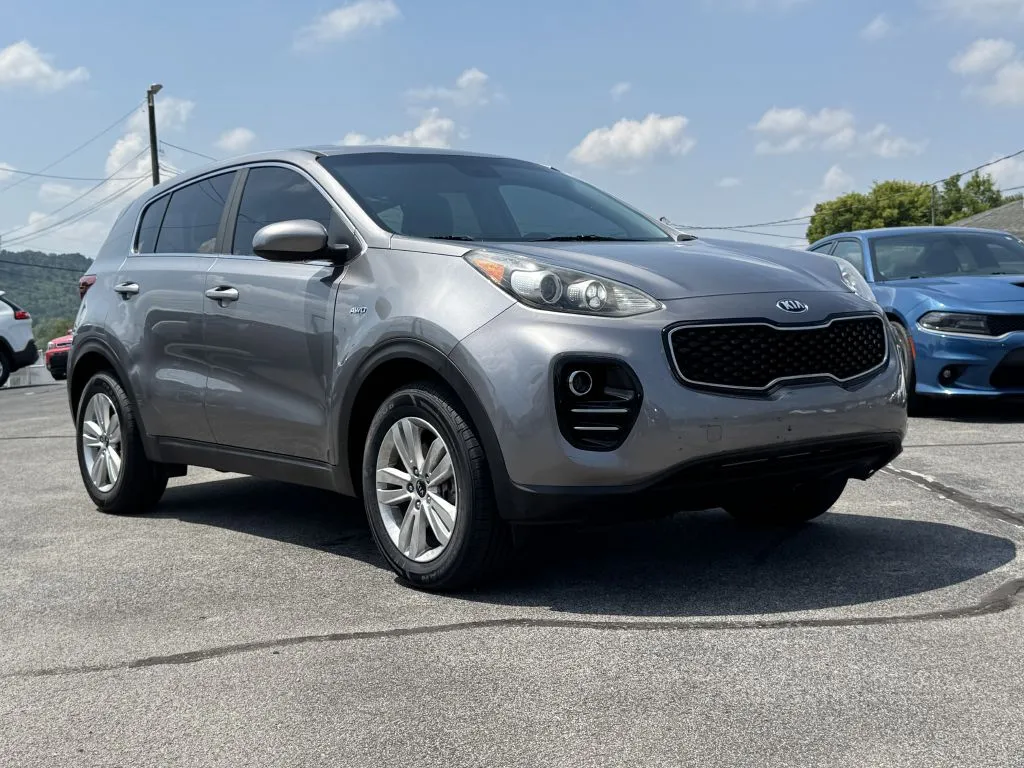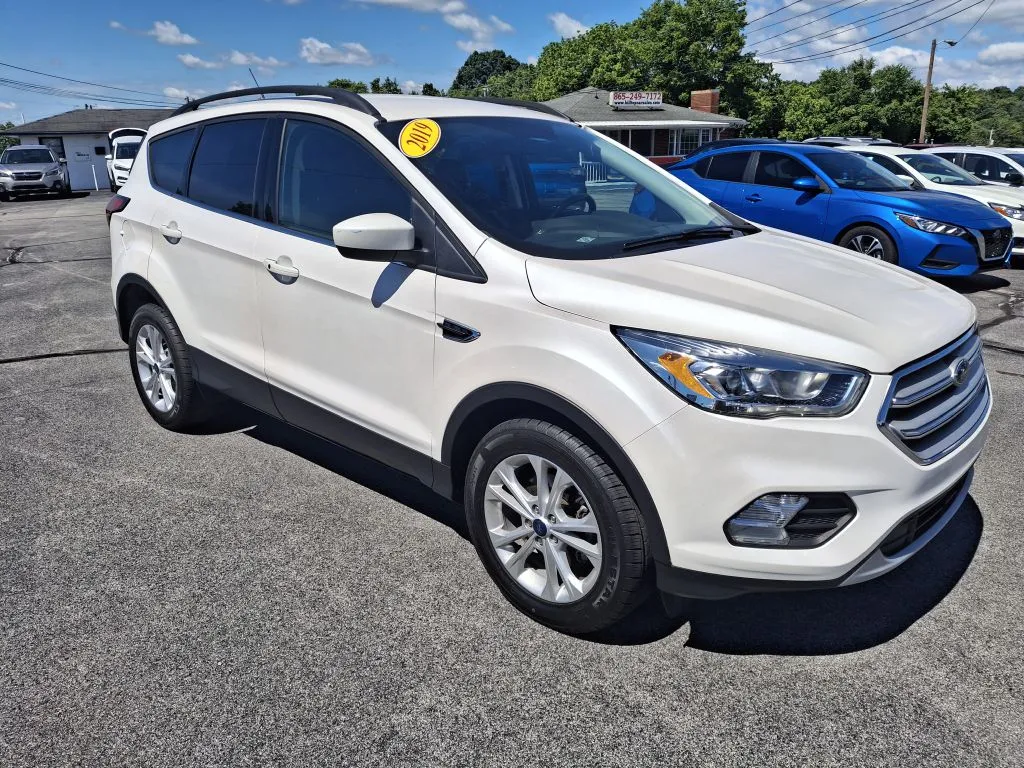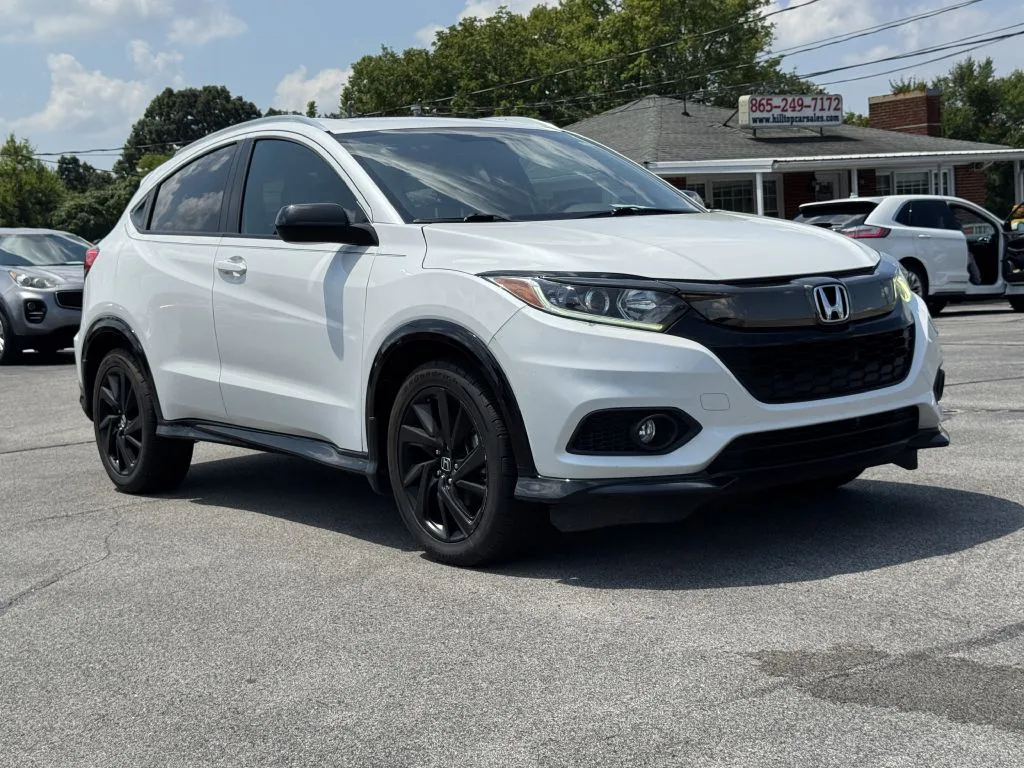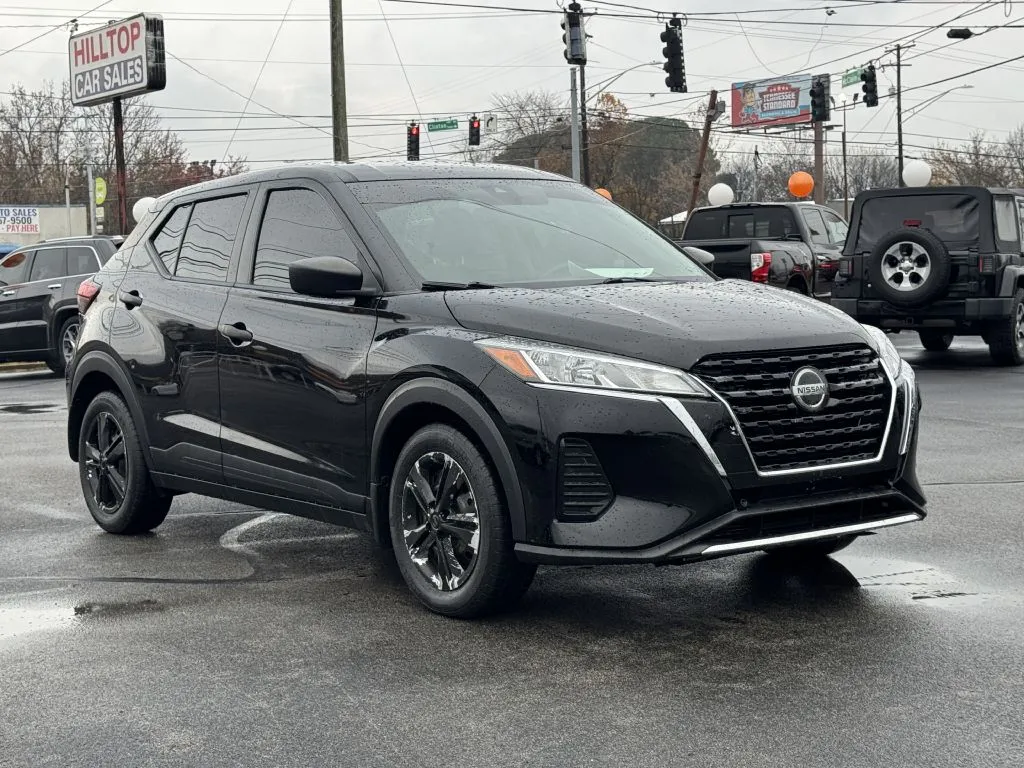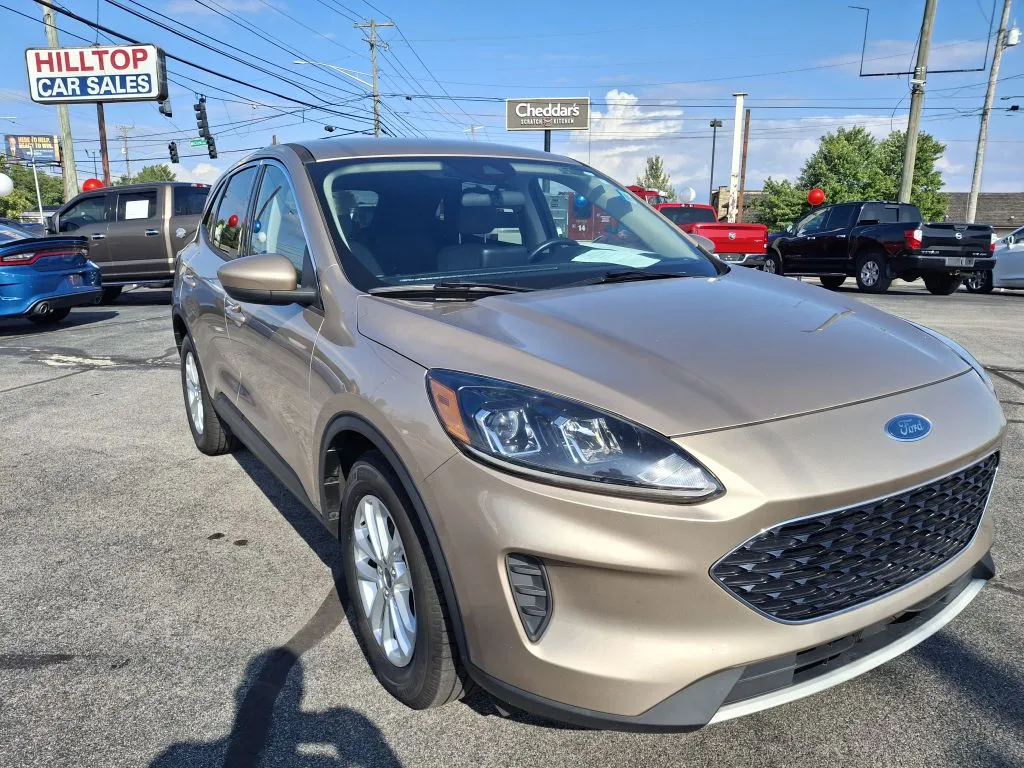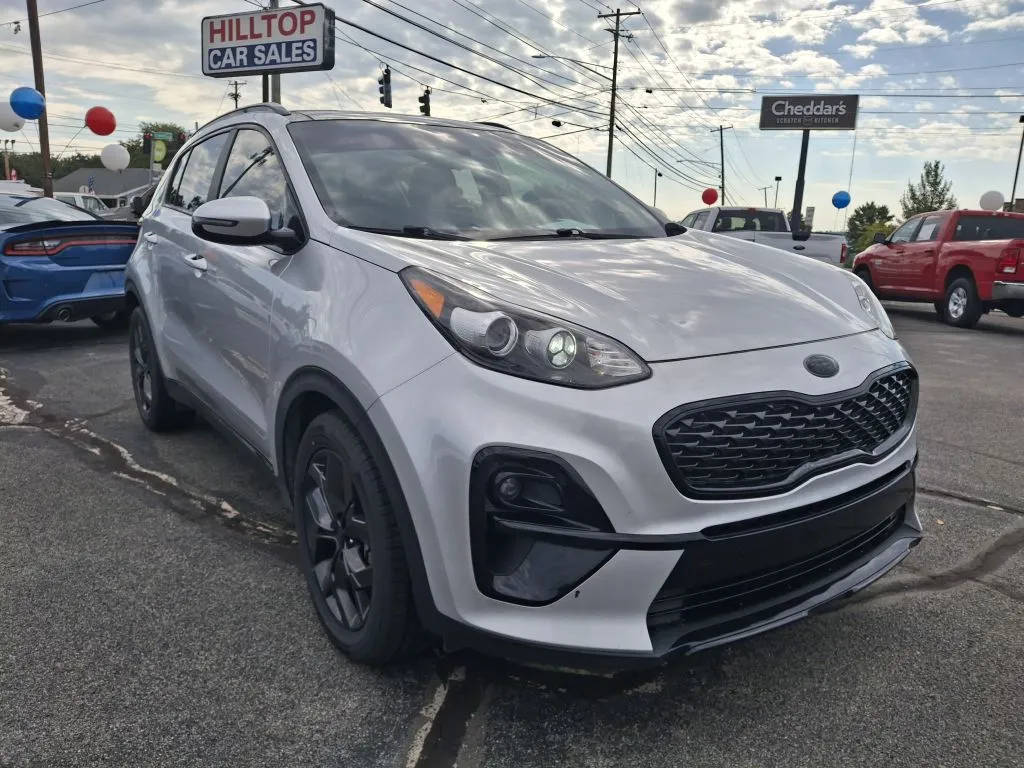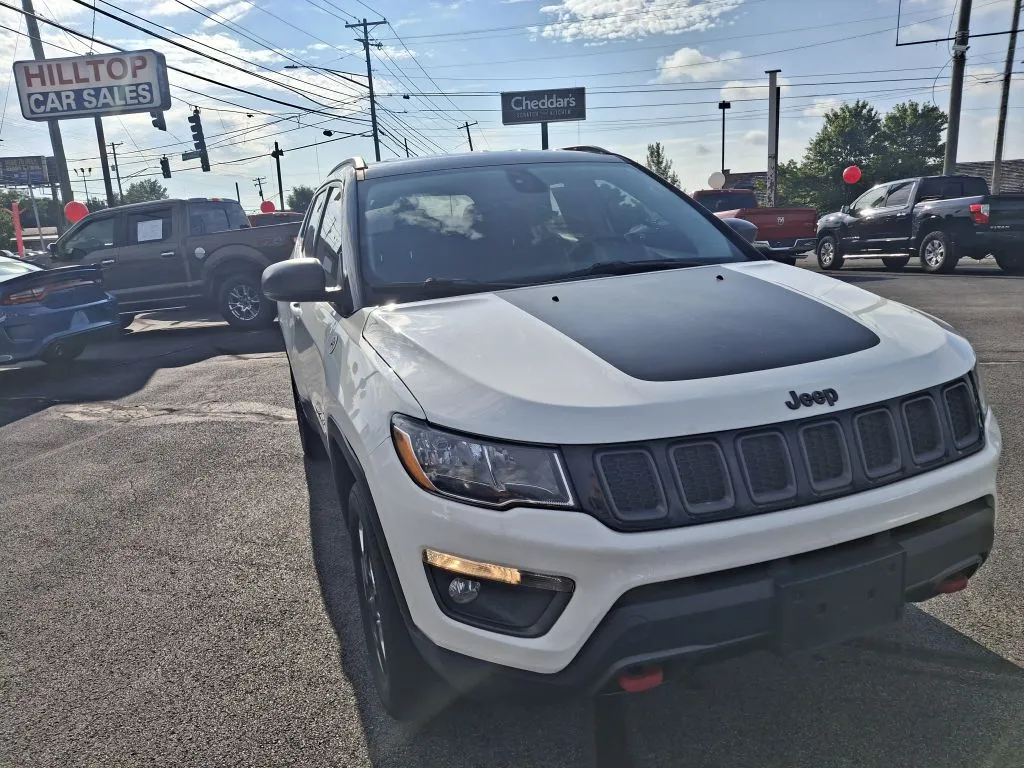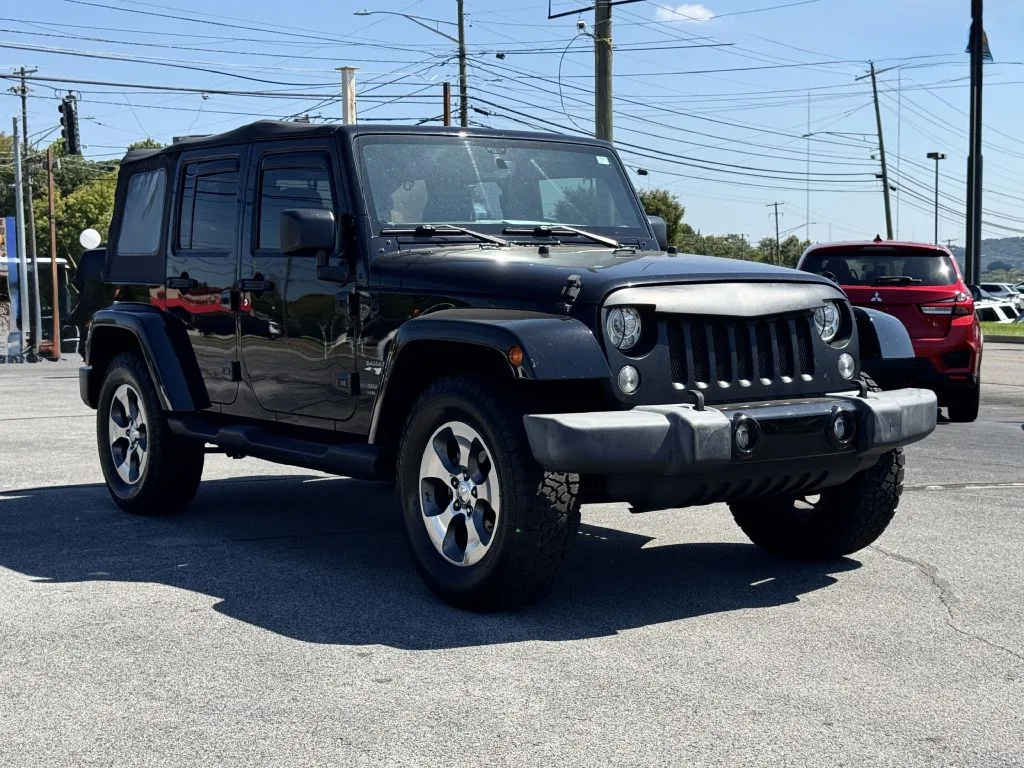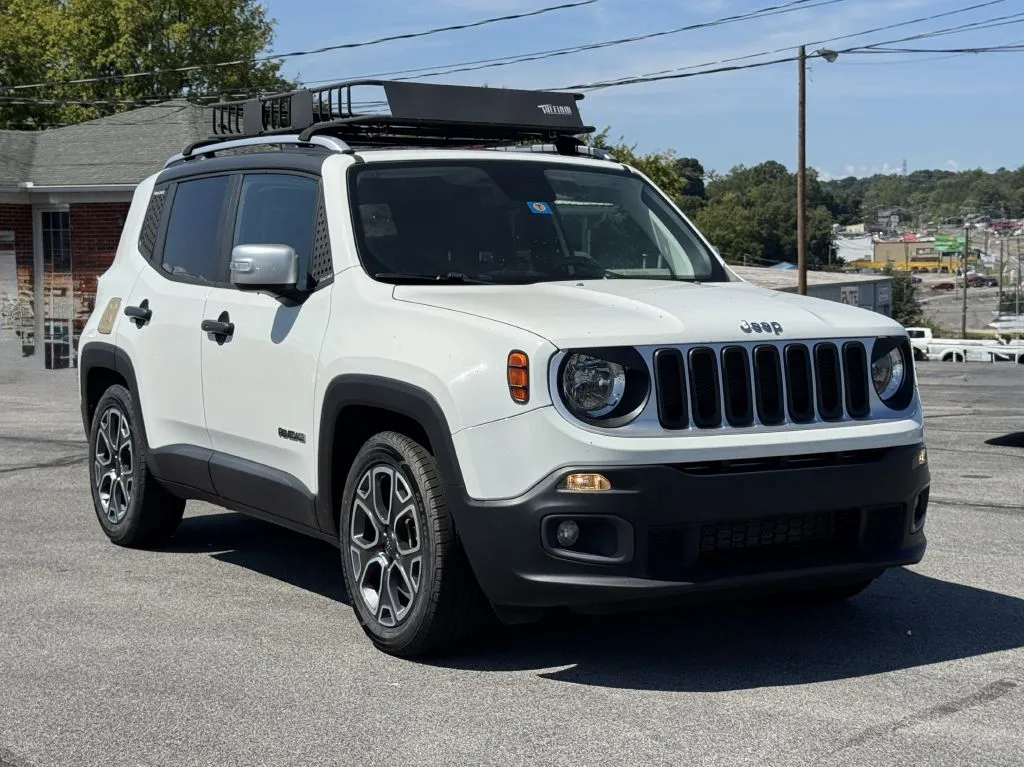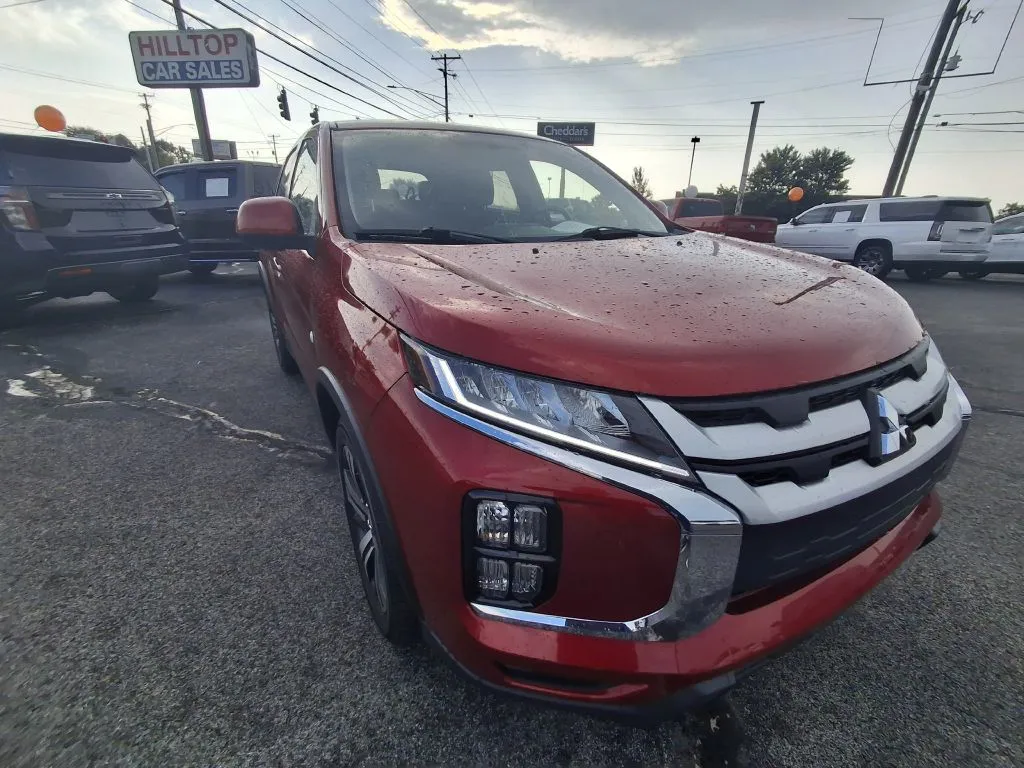Used Cars With Warranty Included: Your Complete 2025 Guide
Buying a used car can feel risky, but warranties help protect you from surprise repair bills.
Many used cars come with warranties that cover big things like the engine, transmission, and electrical systems. That gives buyers a little peace of mind and some financial safety, which honestly, is a relief.
These warranties might come from the manufacturer through certified pre-owned programs, or from third-party providers. It's not always obvious which is better, but having options is nice.
When you understand your warranty options, you can make smarter choices while shopping. There are different types of coverage, from basic powertrain warranties to bumper-to-bumper plans.
The right warranty really depends on the car's age, mileage, and your budget. It's not one-size-fits-all.
Smart shoppers should know what warranties cover, what they don't, and how to compare them. This guide breaks down certified pre-owned programs and third-party warranties to help you find the best fit.
Key Takeaways
- Used car warranties help with repair costs by covering big parts like engines and transmissions
- Certified pre-owned programs come with factory-backed warranties and vehicle inspections
- Warranties usually don't cover routine maintenance, wear items, or stuff that was already broken
What Does a Used Car Warranty Include?
Used car warranties cover certain car parts and systems that might break during regular use. Coverage changes depending on the plan—some protect only major components, while others offer comprehensive protection.
Coverage Components
Most used car warranties focus on the most expensive things to fix. The engine and transmission get the most attention since repairs can cost thousands.
Powertrain warranties usually cover:
- Engine internals (pistons, crankshaft, valves)
- Transmission gears and inside parts
- Drivetrain bits (axles, driveshaft)
Electrical system coverage takes care of the alternator, starter motor, and main wiring. The heating and air conditioning system covers the compressor, condenser, and evaporator.
Suspension and steering pieces like shocks, struts, and power steering pumps often get included. Many plans also protect the brake system master cylinder and calipers.
The fuel system and cooling system usually cover the fuel pump, radiator, and water pump.
Bumper-to-Bumper Warranty Details
A bumper-to-bumper warranty is the most complete option for used cars. It covers almost everything except the regular stuff that wears out.
Bumper-to-bumper coverage usually doesn't cover:
- Oil changes or regular maintenance
- Brake pads and tires
- Wiper blades and filters
- Cosmetic stuff like paint or upholstery damage
These warranties cost more, but they cover a lot more problems. They're best for buyers who want the most protection—maybe you just don't want to worry.
Certified pre-owned programs often include bumper-to-bumper coverage. These are manufacturer-backed and feel a lot like new car warranties.
Term Lengths and Limits
Warranty coverage length varies a lot between companies and plans. Most factory warranties last three years or 36,000 miles, whichever comes first.
Extended warranties for used cars can go up to 15 years or 300,000 miles, but that's rare. Most plans are shorter, based on the car's age and mileage.
Common term options:
- Short-term: 1-2 years or 12,000-24,000 miles
- Medium-term: 3-5 years or 36,000-60,000 miles
- Long-term: 6+ years or 75,000+ miles
Car age and mileage affect if you can get a warranty. Most companies won't cover cars over 10 years old or with more than 150,000 miles.
Deductibles are usually between $50 and $200 per claim. If you pick a higher deductible, your monthly cost goes down, but you'll pay more if something breaks.
Types of Used Car Warranties
Used car warranties fall into three main groups. Manufacturer warranties transfer from the original owner, dealership-backed warranties are usually short-term, and third-party service contracts let you customize your plan.
Manufacturer Warranties
Manufacturer warranties come with new cars and often transfer to the next owner. These are the original warranties from when the car was first sold.
Powertrain warranties usually cover the engine, transmission, and drivetrain. They last longer than basic warranties, sometimes up to 60,000 or 100,000 miles.
Basic warranties cover most car systems and parts, but for a shorter time—usually 36,000 miles or three years.
Certified Pre-Owned (CPO) programs give you manufacturer-backed warranties for certain used cars. The car has to meet age and mileage rules set by the manufacturer.
CPO warranties add extra coverage on top of any original warranty that's left. They often throw in roadside assistance and sometimes loaner cars if yours is in the shop.
The best thing about manufacturer warranties? They're reliable and you can use them at any authorized service center. The rules are clear and the carmaker stands behind the coverage.
Dealership-Backed Warranties
Dealerships sometimes offer their own warranties on used cars they sell. These plans usually give limited coverage for a short time after you buy.
Coverage length is usually 30 to 90 days. Some dealers might offer longer if the car is newer or in great shape.
Repair coverage focuses on big mechanical problems that could leave you stranded. Small fixes and regular maintenance aren't included.
Dealership warranties might require you to get repairs at their shop. That can be a pain if you live far away or travel a lot.
The quality of dealership warranties really depends on the dealer. Some are great, some barely cover anything.
Buyers should read the warranty terms carefully before signing. It's important to know what's included and where you can get repairs done.
Third-Party Service Contracts
Third-party service contracts, or extended warranties, are sold by companies not connected to the carmaker. These contracts come in all shapes and sizes.
Vehicle service contracts can be bought at the dealership or directly from warranty companies. They kick in when the manufacturer warranty runs out.
Service contracts let you choose coverage, from basic powertrain to bumper-to-bumper.
Contract terms can be just a year or as long as several years, with mileage limits up to 100,000 miles.
Third-party plans sometimes have higher deductibles than manufacturer warranties. Their repair shop networks can also be smaller.
The cost of these warranties depends on your car's make, model, age, and miles. Covering an older, high-mileage car usually costs more.
It's smart to check the warranty company's reputation and financial health. Always read the contract closely so you don't get surprised by what's not covered.
Certified Pre-Owned Car Warranty Programs
Factory-certified programs offer longer warranty coverage and extra perks that regular used cars don't have. These programs require strict inspections and include nice extras like roadside assistance.
Factory-Certified Programs Explained
Certified pre-owned programs are backed by the carmaker, not a random company. That means you get a warranty that matches the automaker's quality standards.
Most programs add one or two years to the original factory warranty. For example, Acura's Precision Certified program gives you seven years or 100,000 miles of powertrain coverage from when the car was first sold.
Key Program Features:
- Transferable warranties that go with the car if you sell it
- Zero deductibles for most repairs
- Unlimited mileage with some brands
- Trip interruption reimbursement if you break down far from home
GM brands like Chevrolet, Buick, and GMC offer strong programs. They give you six years or 100,000 miles of powertrain coverage, plus an extra year of bumper-to-bumper.
Luxury brands often have shorter warranties but add cool perks. BMW offers a year of unlimited mileage coverage and free loaner cars during repairs.
Key Certification Standards
Manufacturers set pretty strict rules for certified pre-owned cars. Most only take cars six years old or newer with less than 75,000 miles.
Common Eligibility Requirements:
- Age limit: 4-6 years from when it was first sold
- Mileage cap: 50,000-80,000 miles max
- Inspection points: 100-200 things checked
- Clean title—no major accidents
Each brand's inspection is a little different, but they all check the important stuff. Audi does 125+ checks, while GM looks at 172 parts.
Cars have to pass all safety and mechanical tests to get certified. If something fails, they swap it out for a genuine part before selling.
Some brands have more than one certification level. Acura, for example, has both Precision Certified and Precision Used programs, depending on the car's age and condition.
Extras Like Roadside Assistance
Certified pre-owned programs come with nice extras beyond the warranty. Roadside assistance helps if you break down or get stuck.
Most programs give you 24-hour roadside help for as long as the warranty lasts. BMW even covers you for six years from when the car was first sold, even if the used car warranty ends.
Common Additional Benefits:
- Free maintenance for the first service
- Satellite radio trials (usually 3-6 months)
- Vehicle history reports from Carfax or AutoCheck
- Exchange policies—return the car within 3-7 days if you change your mind
GM brands throw in two free maintenance visits within 24,000 miles of buying. They also give you a loaner car if yours is in the shop.
Luxury brands sometimes add unique perks. Ferrari Approved cars keep their original seven-year maintenance plan, and Aston Martin gives 15% off on accessories.
These extras really add value. They make owning the car easier and can save you money during the warranty period.
Comparing Warranty Providers
Car buyers can pick from manufacturer-backed programs, dealership plans, or third-party providers. Each has its own benefits, costs, and coverage levels.
Major Manufacturer Programs
Manufacturer warranty programs give you factory-backed coverage for their cars. GM Extended Protection Plans cover Chevrolet, Buick, GMC, and Cadillac, using factory-trained techs and real parts.
These programs require the original warranty to still be active. Usually, the car has to be under three or four years old and have less than 36,000 to 48,000 miles.
Honda Care covers Honda vehicles through authorized dealers. They use factory parts and certified techs for repairs.
Chrysler Warranty Direct covers FCA cars like Chrysler, Dodge, RAM, Jeep, Alfa Romeo, and Fiat. You need less than 125,000 miles and the car can't be older than 10 years.
Manufacturer programs cost more than third-party plans. But you get OEM parts and factory-trained service at dealerships all over the country.
Top Dealership Offerings
Dealerships usually have their own warranty programs or work with third-party companies. These vehicle service contracts fill the gap between manufacturer programs and independent companies.
Many dealers have certified pre-owned programs with longer coverage. These include inspections and limited warranties that go past the original factory plan.
Dealership warranties can be all over the place in terms of coverage. Some work closely with the manufacturer, others use third-party companies for claims.
Prices at dealerships are often higher than buying straight from a third-party. But you can sometimes negotiate the cost as part of the car deal.
Dealership programs can be convenient since you can handle both the car purchase and warranty in one place.
Leading Third-Party Providers
Third-party companies offer extended warranty coverage for lots of brands and ages. CARCHEX covers cars up to 10 years old with under 125,000 miles and has an A+ BBB rating.
Endurance lets you get repairs at any dealership or ASE-certified mechanic. They offer a 30-day money-back guarantee and work with a big network.
Select Auto Protect covers any car that's in good shape at purchase, no matter how old. They're available in all 50 states and let you use any ASE-certified shop.
Third-party providers usually give you more choice on repair shops and car eligibility. They're often cheaper than manufacturer plans but might not use OEM parts or factory-trained techs.
Coverage ranges from basic powertrain to almost everything except stuff that just wears out.
Understanding Warranty Coverage Details
Used car warranties usually cover certain car systems, not every single part. Different warranties protect steering, brakes, suspension, and electrical systems to different degrees.
Steering Components
Power steering systems are usually included in most used car warranties. This covers the power steering pump, steering rack, and fluid lines.
Manual steering parts get covered for major mechanical failures. That includes the steering wheel, column, and linkages.
Steering belts and hoses are covered if they fail from normal use, but not from accidents or abuse.
Most warranties include:
- Power steering pump replacement
- Steering rack repairs
- Tie rod replacements
- Steering column fixes
Alignment services aren't usually covered unless a steering part fails. Regular maintenance like power steering fluid changes is also not included.
Brakes and Suspension Systems
Brake system coverage really depends on the warranty you have. Major parts like brake calipers, brake lines, and master cylinders usually get included.
Bumper-to-bumper warranty plans tend to cover more brake parts than basic powertrain warranties. You might see things like brake boosters, ABS systems, and electronic brake controls covered.
Suspension coverage usually includes:
- Shock absorbers and struts
- Springs and mounting hardware
Other covered parts are suspension control arms, ball joints, and bushings.
Brake pads and rotors count as wear items. Most warranties leave those out unless they fail early because of another covered part.
Suspension warranty coverage protects you from big mechanical failures, not everyday wear. If road hazards or accidents damage your suspension, you’re probably out of luck.
Electrical and Technology Systems
Electrical system coverage usually takes care of the alternator, starter, and main wiring harnesses. Since these are crucial for your car to run, warranties tend to cover them well.
Technology systems like infotainment, navigation, and climate control get covered under comprehensive warranties. Basic powertrain warranties skip these features.
Common covered electrical parts:
- Battery charging system
- Ignition system components
You’ll also see coverage for electronic control modules, wiring, and connectors.
Advanced safety systems like backup cameras and parking sensors might only get limited coverage. Aftermarket electronics? Most warranties leave those out.
Diagnostic fees sometimes get paid for if the repair is approved. If the problem isn’t covered, you’re stuck with the bill for troubleshooting.
Benefits of Buying Used Cars With Warranty Included
Used car warranties give you financial protection against surprise repairs. They can save you a lot on maintenance and usually throw in extras like roadside assistance. Plus, a warranty can help keep your car’s resale value higher.
Peace of Mind for Buyers
A warranty turns the used car buying process from a gamble into something you can feel good about. You know you’ve got backup if a big part fails and costs a fortune.
Warranty coverage usually includes engine, transmission, and electrical failures. Repairs can run from $100 for small stuff to over $4,000 if your transmission goes out.
Many warranties toss in roadside assistance as well. That can mean:
- Emergency towing
- Jump-starts for dead batteries
Other perks include flat tire changes and lockout help.
It’s hard to overstate the peace of mind this brings. You get to enjoy your car without always worrying about what might break next. For anyone who relies on their car every day, that’s huge.
Reduced Maintenance Costs
Warranties can really cut down on your long-term car expenses. Big repairs that would normally drain your wallet become smaller, manageable payments if you’re covered.
Transmission repairs alone can run $3,000 to $4,000. Engine issues can easily top $2,000. With a warranty, those scary bills shrink down to just the deductible.
Some extended warranties even cover regular maintenance like oil changes and brake pad swaps. That stuff adds up fast.
As cars get older, repairs usually get more expensive. A solid warranty acts as a safety net so you don’t get slammed with big bills as your car ages.
Enhanced Vehicle Value
Cars with warranties you can transfer to the next owner usually sell for more. Buyers see that coverage as a big plus because it lowers their risk.
A transferable warranty might raise your car’s market value by hundreds or even over a thousand dollars. Sometimes that’s enough to make up for the cost of the warranty itself.
It’s also just easier to sell a car with a warranty. Buyers feel better about the deal, so you might sell faster or get a better price.
Certified pre-owned vehicles with manufacturer warranties often go for top dollar compared to similar cars without coverage. That factory backing is hard for private sellers to match.
What Is Typically Not Covered?
Used car warranties have pretty clear limits. Most won’t pay for routine maintenance, pre-existing issues, or damage from accidents or misuse.
Common Exclusions
Pre-existing conditions are a major exclusion. If a problem existed before the warranty started, you’re probably not getting it fixed for free.
Accident damage isn’t covered by warranties. That includes collision, weather, or theft damage—your insurance has to handle those.
Misuse and neglect will void your coverage. Things like racing, off-roading, or just not taking care of your car can get your claim denied.
Cosmetic issues—like scratches, dents, or worn seats—aren’t covered. Warranties stick to mechanical and electrical stuff.
Aftermarket parts usually aren’t included. If you install non-factory parts, you might lose coverage for related systems.
Understanding Limitations
Mileage and time limits decide how long your coverage lasts. Most warranties expire after a certain number of miles or years, whichever comes first.
Deductibles mean you’ll pay part of the repair bill. These usually range from $100 to $500 per claim.
Authorized repair shops have to do the work. If you use an unauthorized mechanic, you could lose your coverage.
Proper maintenance records are a must. If you skip oil changes or other scheduled services, your claim could get denied.
Wear Items and Maintenance
Routine maintenance stays on you. Oil changes, tire rotations, and fluids aren’t covered by most warranties.
Wear and tear items need regular replacement. These include:
- Brake pads and rotors
- Tires and wheels
You’ll also need to replace air filters, cabin filters, wipers, bulbs, and fuses yourself.
Scheduled services like tune-ups and inspections aren’t included either. Some extended warranties sell separate maintenance plans if you want them.
Consumable parts that wear out naturally aren’t covered. That means spark plugs, belts, and hoses come out of your own pocket.
How to Check Remaining Warranty on a Used Car
To see if a used car still has warranty coverage, you’ll need to check the factory warranty status and know when it runs out. Most warranties transfer, but you should always double-check the details and time left.
Verifying Factory Warranty
The vehicle identification number (VIN) is your ticket to warranty info. It’s a 17-digit code on the dashboard near the windshield or on the driver’s door frame.
Contact the dealership where the car was first sold, or any authorized dealer for that brand. Give them the VIN and they’ll pull up the warranty details for you.
Use manufacturer websites to check warranty status online. Ford, Honda, and Toyota let you enter the VIN and see what’s still covered. It’s quick and you don’t even have to call.
Review the owner's manual for warranty terms and length. The manual will list how many years or miles the warranty lasts. Compare that to your car’s age and mileage to figure out what’s left.
Manufacturers usually offer a few types of warranty:
- Bumper-to-bumper coverage: Covers most parts
- Powertrain warranty: Covers engine and transmission
- Emissions warranty: Covers pollution control parts
Expiration Dates and Transferability
Most factory warranties transfer to new owners for free. The coverage follows the car, not the first buyer. Still, check with the manufacturer for any special rules.
Check warranty expiration by looking at the original sale date and mileage. Warranties usually end at a certain time or mileage—whichever happens first.
Extended warranties or service contracts can have different rules. Some need you to notify the company within a certain time, and others might charge a fee or limit who can get the coverage.
Certified pre-owned vehicles often come with extra factory warranty coverage. These usually add a year or two to the original warranty and sometimes include roadside help.
Ask the seller for all warranty paperwork, including any extra service contracts bought outside the factory warranty.
How to Extend Warranty Coverage
Extended warranties and vehicle service contracts give you extra protection after the factory warranty ends. They can help cover big repair bills for important parts once the original coverage runs out.
Purchasing an Extended Warranty
Extended warranties can cost anywhere from $1,000 to several thousand dollars. The price depends on what’s covered and how old your car is.
Bumper-to-bumper warranties offer the most coverage. They protect things like the engine, transmission, electrical parts, and air conditioning. They’re pricier but cover almost everything.
Powertrain warranties focus on the basics: engine, transmission, and drive axles. They skip over electrical systems and other extras, but they’re cheaper.
Drivetrain warranties cover the transmission, driveshaft, and axles but not the engine. Some folks pick this for cars with a solid engine but older transmission parts.
Always compare deductibles, what’s covered, and where you can get repairs before buying. Some warranties make you use certain dealerships, while others let you pick any certified mechanic.
Vehicle Service Contracts Explained
Vehicle service contracts work like extended warranties but aren’t from the manufacturer. They kick in after the factory warranty ends and you sign a separate agreement with the provider.
Service contracts spell out what’s covered and what’s not. Most don’t cover normal wear items like brake pads, tires, or oil changes. They also won’t pay for pre-existing problems or repairs from neglect.
Coverage benefits might include roadside help, rental car payback, or towing. Some contracts offer 24/7 customer support and let you pick your repair shop.
Contract terms change depending on the provider and your car. Always check the start date, mileage limits, and how long coverage lasts. Some contracts can transfer to a new owner if you sell the car.
You can pay all at once or in monthly installments. Before you sign, make sure the company is stable and has a good reputation for customer service.
Tips for Buying Used Cars With Warranty Included
If you’re shopping for a used car, it pays to ask the right questions about warranty coverage. Don’t just take the seller’s word—read everything and know what you’re getting.
Questions to Ask Sellers
Ask the seller what type of warranty the car has and who provides it. Is it from the manufacturer or a third-party company?
Find out exactly what’s covered. Some warranties only pay for big stuff like the engine and transmission. Others might include electrical systems or air conditioning.
Ask how long the warranty lasts and what the mileage limit is. Many used car warranties end after a set time or number of miles—like 90 days or 3,000 miles, whichever comes first.
Check if you’ll need to pay a deductible for repairs. Some warranties have a fee for each visit, and others cap how much they’ll pay for certain repairs.
Ask where you can get repairs done. Some warranties only let you use certain dealerships or shops, which can be a hassle if they’re far away.
Reading the Fine Print
Read the warranty documents carefully. Look for exclusions—these tell you what isn’t covered.
Check if there are maintenance rules. If you don’t follow the schedule or use the right parts, you could lose your coverage.
See if there are limits on repair costs. For example, engine repairs might only be covered up to $5,000.
Find out how to file a warranty claim. Some companies want you to get pre-approval or fill out special forms.
Look for cancellation policies. Some service contracts let you cancel within a certain time for a refund.
Making an Informed Decision
Compare warranty coverage from different sellers and third-party companies. Dealerships might have different packages and prices.
Think about the car’s age, mileage, and overall shape. Older, high-mileage cars might need more repairs, so a warranty could be worth more.
Check out the warranty provider’s reputation and financial strength. If they’re not reliable, the warranty isn’t worth much.
Add up the total cost, including the warranty. Sometimes a car with a better warranty costs less in the long run, even if the sticker price is higher.
Always get warranty promises in writing before you buy. Verbal promises don’t count if there’s a problem later.
Frequently Asked Questions
Certified pre-owned warranties aren’t the same as standard used car warranties. Most CPO programs give you both powertrain and limited warranty coverage, but the details depend on the manufacturer and the car’s age.
What does a certified pre-owned warranty typically cover?
A certified pre-owned warranty usually includes two main kinds of coverage. Powertrain warranties cover the engine, transmission, and drive axles.
Limited warranties, sometimes called bumper-to-bumper warranties, protect most other vehicle parts. But CPO warranties don't cover regular maintenance items like brake pads or tires.
They also won't pay for damage from accidents or poor maintenance. Most programs throw in extra perks like roadside assistance or rental car reimbursement.
Emissions warranties for hybrid batteries and powertrain parts can last up to eight years or 100,000 miles from the original service date. Some brands even split out coverage for rust protection and safety systems like airbags and seat belts.
Can you explain the benefits of buying a certified pre-owned car?
Certified pre-owned cars come with extended warranty coverage that usually adds another year or two of protection. These cars generally have less than 50,000 miles and get thorough inspections by authorized dealers.
CPO programs backed by the manufacturer offer nationwide warranty support and the company's full backing. This usually means better protection than dealer-only programs, which can have big restrictions.
The average CPO car costs about 1.8 percent more than a similar non-certified used car. Still, you get extra peace of mind with those inspections and longer coverage.
What is the typical interest rate for financing a certified pre-owned vehicle?
Interest rates for certified pre-owned vehicles depend on things like your credit score, loan term, and the market. Many brands offer special financing rates for their CPO vehicles.
If you have excellent credit, you usually get the lowest rates. Folks with lower scores might see higher interest, but CPO programs still make financing possible.
Some manufacturers run promotions with even better rates for CPO cars. You often need to qualify through their financing branch for these deals.
How does the warranty of a certified pre-owned Hyundai compare with those of other manufacturers?
Hyundai's CPO program lets new owners keep the rest of the original 10-year/100,000-mile powertrain warranty. The program also covers whatever is left of the five-year/60,000-mile limited warranty.
Other brands do things a bit differently. Toyota and Honda offer seven-year/100,000-mile powertrain warranties from the original in-service date.
BMW and Audi add one year of coverage after their four-year/50,000-mile new car warranties end. If you buy a non-certified used Hyundai, you lose the long powertrain warranty and drop to five years or 60,000 miles.
That makes certified pre-owned Hyundais a better deal than regular used ones.
Where can I find certified pre-owned cars near my location?
You can find certified pre-owned cars at authorized dealerships for each brand. Most companies run official CPO programs through their dealer networks.
Manufacturer websites usually have CPO search tools. You can filter by location, model, year, and price.
Dealership sites also show their current certified pre-owned inventory. Some big automotive websites pull together CPO listings from lots of dealerships, but it's smart to double-check with the dealer to make sure the car is truly certified before you decide.
What are the conditions to qualify for a 7-year/100,000-mile limited powertrain warranty?
Most 7-year/100,000-mile powertrain warranties start from the car's original in-service date, not the day you buy it. So, the coverage depends on when the car was first registered as new.
Requirements for vehicle age and mileage aren't the same everywhere. Honda, for example, says vehicles must be 5 years old or newer and have less than 80,000 miles.
Ford's program lets in cars up to 6 years old, but they can't have more than 80,000 miles. Keep in mind, the warranty ends when you hit either the time or mileage cap—whichever comes first.
If a car has 105,000 miles, it won't be covered, even if it's only two years old. That can be a bit of a letdown, honestly.



